





BTN74.jpg (taken 8.9.2010)
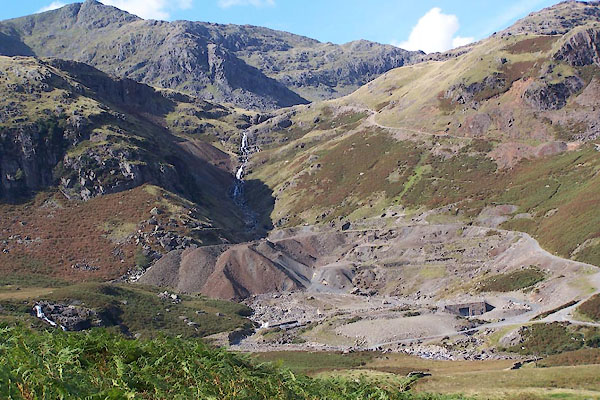
BTN75.jpg (taken 8.9.2010)
placename:- Paddy End Works
"Paddy End Works (Copper)"
placename:- Coniston Copper Works
"Coniston Copper Works"
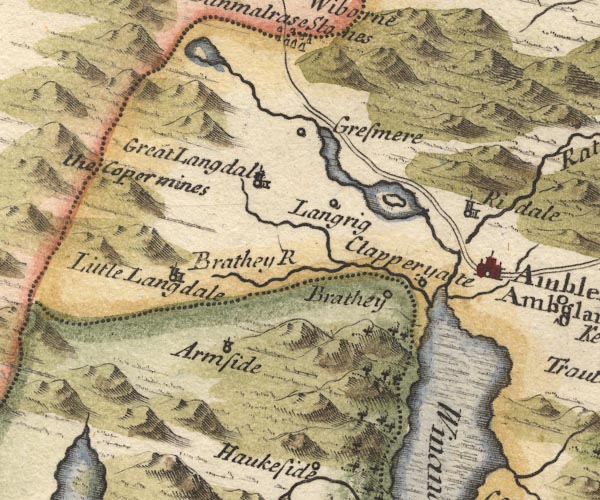
MD10NY30.jpg
"the Copermines"
No symbol.
item:- JandMN : 24
Image © see bottom of page
placename:-
item:- copper; gold
"... Indeed [Cumberland, Westmorland] here was formerly, as far back as Queen Elizabeth, some copper mines, and they wrought them to good advantage; but whether the vein of oar fail'd, or what else was the reason, we know not, but they are all given over long since, ..."
"..."
"... Derwent Fells, where the ancient copper mines were found in Queen Elizabeth's time, and in which, it was said, there was a large quantity of gold. But they are discontinued since that time, for what reason, I know not; for there are several copper mines now working in this county, and which, as they told me, turn to very good account."
"Some tell us, the copper mines on Derwent Fells were discontinued, because there being gold found among the oar, the queen claimed the royalty, and so no body would work them; which seems to be a reason why they shou'd have been applied to the search with more vigour; but be that how it will, they are left off, and the more probable account is, what a gentleman of Penrith gave us, namely, that the charge of working them was too great for the profits."
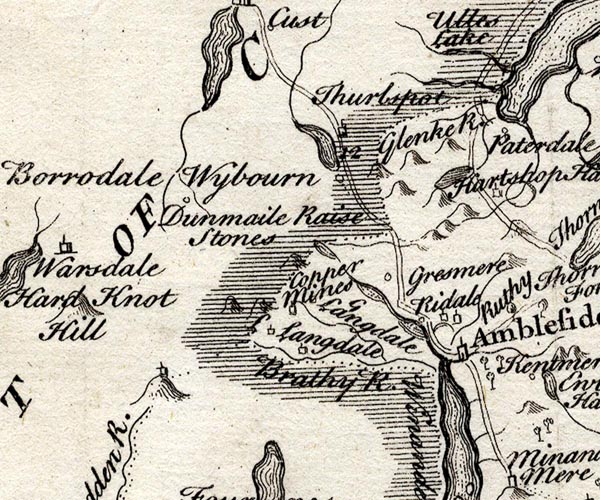
SMP2NYF.jpg
"Copper Mines"
Building.
item:- Dove Cottage : 2007.38.59
Image © see bottom of page
placename:- Copper Mines
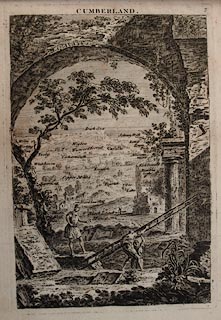 click to enlarge
click to enlargeJL05.jpg
"Copper Mines"
view (sort of)
item:- Carlisle Library : 4.2
Image © Carlisle Library
placename:- Copper Mill
 click to enlarge
click to enlargeFW0106.jpg
Tipped in opposite p.24 in A Picturesque Tour of the English Lakes.
item:- Dove Cottage : 1993.R566.6
Image © see bottom of page
item:- geology
 goto source
goto sourcePage 157:- "... A mine at Coniston, near the southern boundary, produces the yellow sulphuret; ..."
item:- copper
 goto source
goto sourcePage 168:- "... From the earliest recorded times, there have been works here [Old Man of Coniston] for the extraction of copper; and at present it is no unusual thing for £2,000 per month to be paid away in wages. The works commence at about half a-mile up the mountain, on its east side; and there is a large estab-"
 goto source
goto sourcePage 169:- "[estab]lishment of sheds, shops and offices, clustered at the upper end of a basin among the hills. If the traveller desires to explore the mines, he can descend on that side of the mountain. ..."
placename:- Coniston Mine
item:- Triddle Foot cross course; Lever's Water cross course; Triddle Vein; Kernal Vein; Hospital Vein; Paddy End Vein; South Vein; Fleming's String; Lever's Water Vein; Brimfell Vein; Deep Level Vein; Bonser Vein; Cobbler's Hole; Simon Nick; fairies; copper ore
 goto source
goto sourcepage 114:- "CONISTON MINE."
"The Coniston Copper Mine is situated about a mile west-north-west from Coniston, in a recess which lies between the Old Man and Wetherlam. It embraces a large number of east and west veins, and two powerful north and south veins, or cross courses, about a quarter of a mile apart, and named respectively the Triddle Foot and Lever's Water cross courses. These cross courses seem to have produced a considerable lateral displacement of the rocks, as all the east and west veins are cut off by them; but the amount of displacement cannot be determined with any degree of accuracy."
"Of the east and west, or ore-bearing veins, there are six which stretch between the cross courses, namely, the Triddle, Kernal, Hospital, Paddy End, and South veins, and Fleming's string. On the west of Lever's Water cross course, and on the southern side of the valley, are the Lever's Water and Brimfell veins; and the Deep Level or "Bonser" vein stretches eastward from the Triddle Footcross course. All these veins have produced ore, but the last named is the most productive, and has been most"
 goto source
goto sourcepage 118:- "extensively wrought; an adit level has been driven on it, about 50 fathoms below the outcrop, and in this ground the ore was so abundant that its removal left a chasm of immense size, called the "Cobbler's Hole." Two shafts have been sunk on the Bonser vein, about 100 fathoms apart, the old shaft to a depth of 170 fathoms, and the new shaft 205 fathoms below the adit level, or 255 fathoms below the surface. The next in importance is the Paddy End vein, which stretches between the cross courses, on the southern side of the valley; it has yielded large quantities of ore, and the most valuable ore which the mine has produced. It is also the most ancient part of the mine. Dr. Gibson relates an old legend respecting some of the workings at Paddy End, which I will give in his own words:- "Across the face of the rocks over Paddy End you will observe a diagonal fissure. It is called 'Simon Nick.' after the miner who made it long ago. There were fairies in the land in Simon's time, and, directed by them, he found vast treasures in copper there, where none but himself saw any. It is said, however, that at length Simon divulged the secret cause of his success, when it instantly ceased, and, vexed at his folly, he became reckless in following out his dangerous occupation, and soon fell a victim to one of the casualties to which incautious miners are so liable.""
"Coniston Mine is in all probability the oldest mine in the North of England; it is stated by antiquarians that it was wrought by the Romans during their earliest occupation of this country, and probably by the Britons before them, and there is some reason to believe it has been wrought at irregular intervals for about 2,000 years. The only definitely known period of rest occurring about the middle of the seventeenth century, when it was closed for a few years owing to its proprietor, Sir Daniel Fleming, being involved in the civil wars of that time; but after the Restoration, the work was recommenced and continued, on a small scale, until it was taken up by the Messrs. Taylor, of London, about 90 years ago. After that time, the mine was wrought with great vigour, and during a great number of years it gave employment to several hundreds of men and boys, and made returns of from L30,000 to L36,000 per annum.*"
"The vein-stone is very hard, and consequently the dressing required a great amount of labour; but there was no lack of machinery for carrying it out in an efficient manner. When the mine was in its greatest prosperity, fifty or sixty head of stamps were constantly employed in reducing the poorer ore stuff; and for the richer material there were crushing mills, jigging, buddling, and other machinery, which required the united power of twelve or thirteen water-wheels. About the year 1874 the mine became"
"*It is recorded in Mr. Collingwood's book of Coniston, on the authority of Dr. Gibson, the Medical Officer of the Mine (page 60) that in 1855 the monthly wage list amounted to L2,000, and that for many years the shipment of ore amounted to 300 tons per month, from five to six hundred workmen being employed on the mine."
 goto source
goto sourcepage 119:- "less prosperous, owing to various causes; amongst which are the great depth of the mine, and the low price of copper ore, caused by the immense deposits found in Chili and South Africa, and the decreased demand for the metal, owing to the substitution of iron vessels, both in the Royal and Merchant Navies, for those built of wood and sheathed with copper. During the years 1877 to 1889 the mine was kept in progress by a few men, rarely more than a dozen, and at the end of that time it was abandoned."
placename:- Coniston Mine
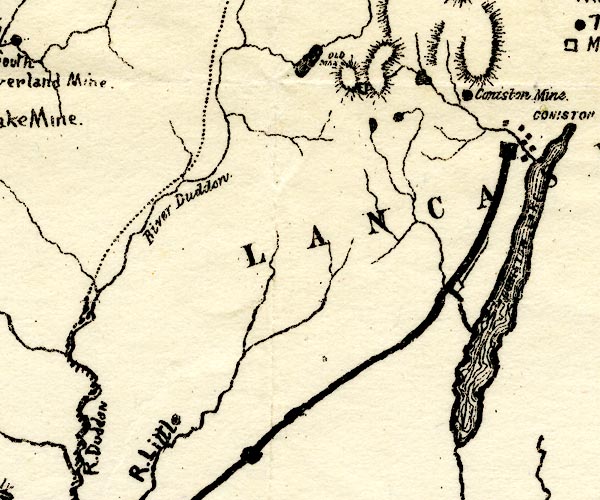
PST2SD29.jpg
"Coniston Mine"
mine symbol
item:- JandMN : 162.2
Image © see bottom of page
placename:- Coniston Mine
item:- Bonser Vein
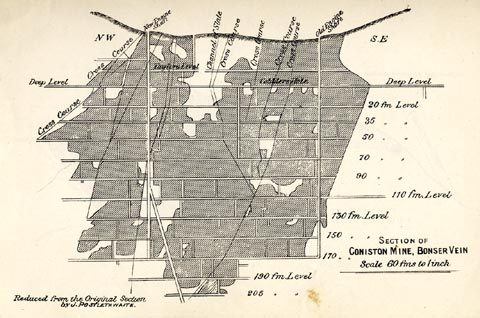 click to enlarge
click to enlargePST326.jpg
On p.115 of Mines and Mining in the English Lake District, by John Postlethwaite.
printed, lower right "SECTION OF / CONISTON MINE, BONSER VEIN / Scale 60 fms to 1 inch"
printed, lower left "Reduced from the Original Section / by J. POSTLETHWAITE."
item:- JandMN : 162.28
Image © see bottom of page
placename:- Coniston Copper Mines
placename:- Coniston Mine
item:- malachite; copper pyrites
Geological Outing of the Kendal and District Mine Research Society
Log book page 48:- "DATE - SUNDAY 30/3/80 / MAP REF - 2900/9850 (SHEET 96 1:50000) / LOCATION - CONISTON / NAME - CONISTON COPPER MINE / TYPE OF SITE - MINES / WORKING OR DISUSED - DISUSED / PEOPLE IN PARTY [ ] / NOS. OF PHOTOS - SLIDES Nos.27. / SPECIMENS FOUND - MALACHITE / COMMENTS - WARM DRY DAY. ENTERED MINE VIA HORSE LEVEL, AND REACHED OLD ENGINE SHAFT, FOLLOWED ONE OR TWO LEVELS WHICH ALL ENDED IN ROCK WALLS. PLENTY OF STOPING. ENGINE SHAFT FULL OF WATER UP TO HORSE LEVEL. A LEVEL IN THE BECK WAS ALSO INVESTIGATED ON THE WAY BACK FROM THE MINE, BUT WAS FOUND TO BE IN WATER, TO (sic) DEEP TO WALK INTO, AND A FURTHER TRIP NEXT YEAR WAS PROPOSED WITH BOAT."
Log book page 68:- "DATE - 17/8/80 / MAP REF - / LOCATION - / NAME - / TYPE OF SITE - / WORKING OR DISUSED - / PEOPLE IN PARTY [ ] / NOS. OF PHOTOS - 27. / SPECIMENS FOUND - SMALL PIECES OF COPPER PYRITES &MALACHITE. / COMMENTS - WARM DULL DAY. ENTERED LEVEL IN BECK UNDER WATERFALL, BUT THIS LEVEL WAS ONLY A TRIAL AND EXTENDED ONLY A FEW HUNDRED FEET. ENTERED FOUR OTHER LEVELS AT THE MAIN MINE AREA, THE HORSE LEVEL, UP TO THE ENGINE SHAFT, AND THREE OTHERS AT THE PADDY END MINES, SOME WERE IN DEEP WATER, OTHERS WERE DRY. (SEE ALSO 30/3/80)"
item:- private collection : 82
Image © see bottom of page
placename:- Bonser Vein
placename:- Paddy End Mine
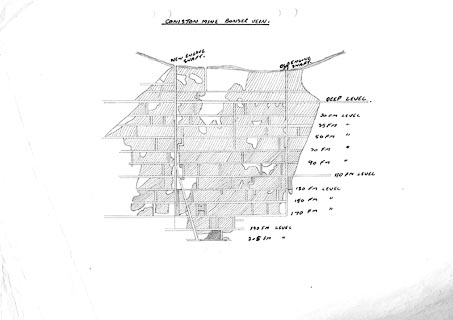 click to enlarge
click to enlargeKMR11.jpg
"CONISTON MINE BONSER VEIN."
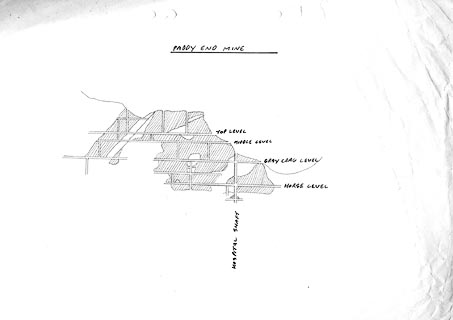 click to enlarge
click to enlargeKMR36.jpg
"PADDY END MINE"
item:- private collection : 82
Image © see bottom of page
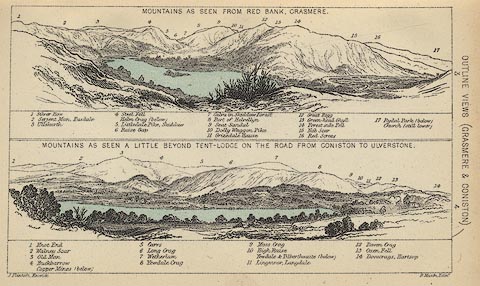 click to enlarge
click to enlargeBC08E3.jpg
"... Copper Mines ..."
item:- JandMN : 37.12
Image © see bottom of page
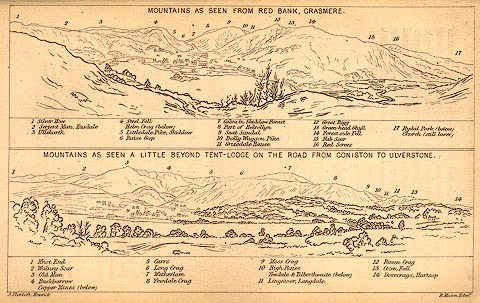 click to enlarge
click to enlargeBC02E3.jpg
"... Copper Mines ..."
item:- JandMN : 32.5
Image © see bottom of page
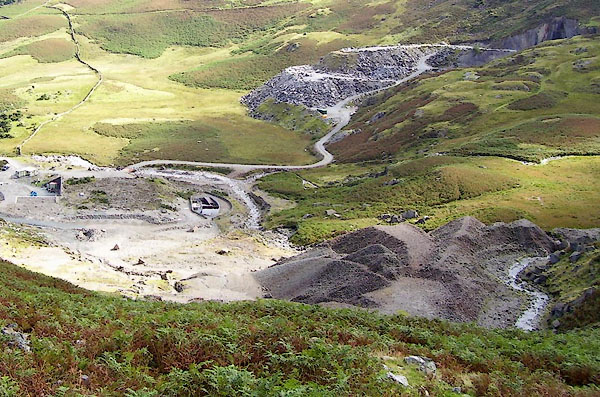
BOD20.jpg Paddy End workings?
(taken 3.9.2007)
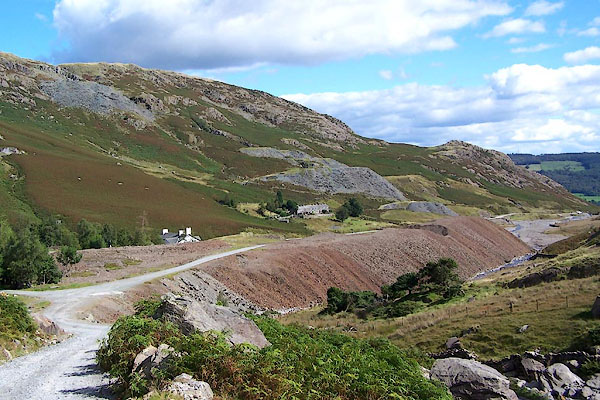
BOC40.jpg (taken 3.9.2007)
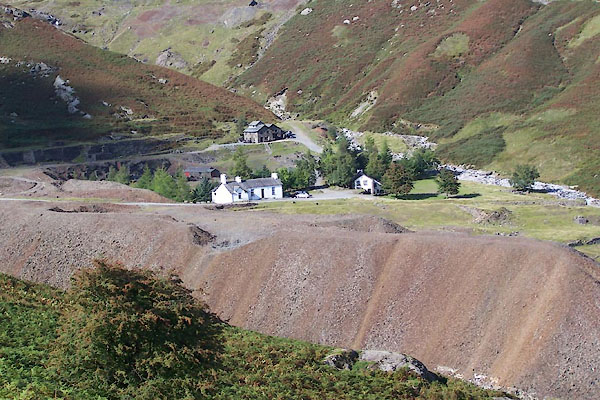
BTN78.jpg Coniston Copper Works, and now the YHA.
(taken 8.9.2010)
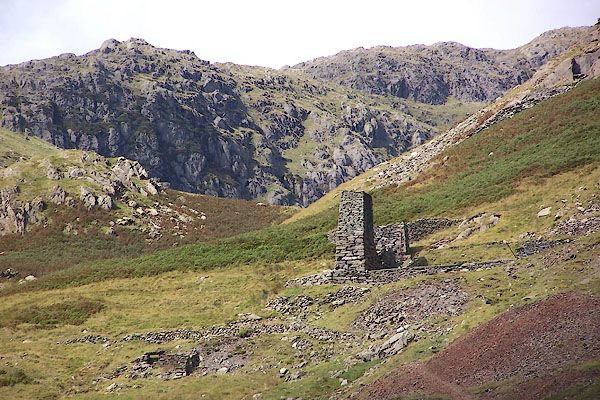
BOC37.jpg (taken 3.9.2007)
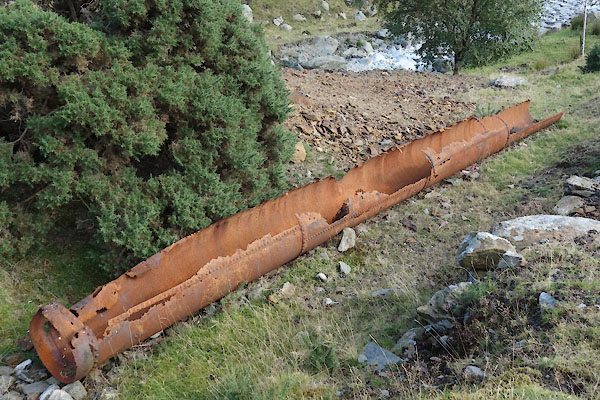
CBT63.jpg (taken 17.9.2014)
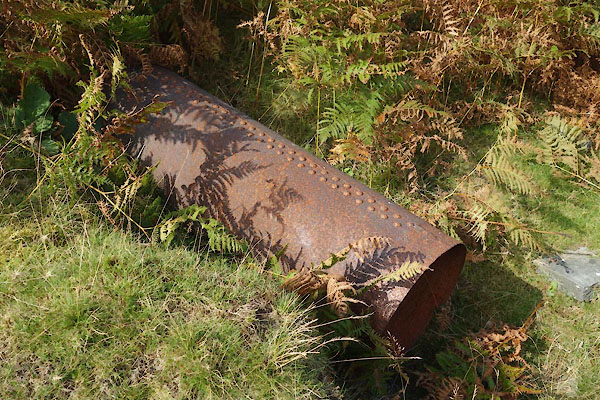
CBT64.jpg (taken 17.9.2014)
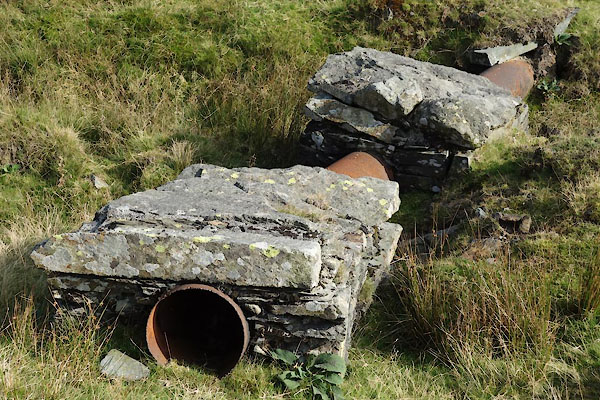
CBT65.jpg (taken 17.9.2014)

CBT66.jpg Hut at the lower end?
(taken 17.9.2014)
Adams, John: 1988: Mines of the Lake District Fells: Dalesman Books (Lancaster, Lancashire):: ISBN 0 85206 931 6
Holland, Eric G: 1981: Coniston Copper Mines: Cicerone Press (Milnthorpe, Cumbria):: ISBN 0 90236 336 0
